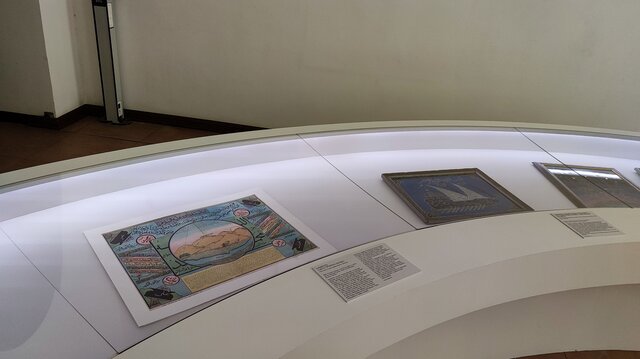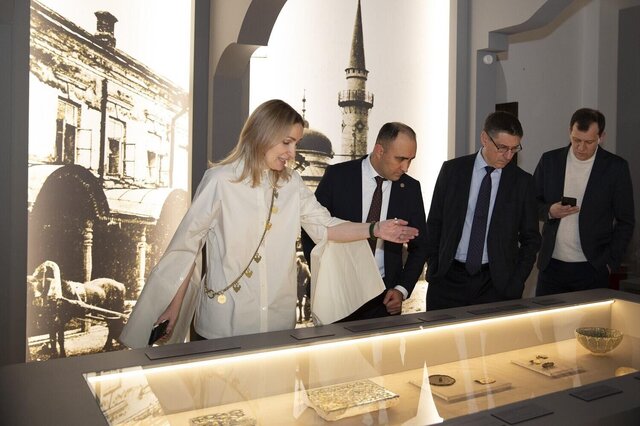The exhibition at the Tsaritsyno Museum-Reserve focuses on Tatar art crafts and their development in urban environments. The exhibition features over four hundred pieces, including 12th-century Bulgarian gold, 13th-century Golden Horde silver, household items, clothing, footwear, late 19th-century books and magazines, and the renowned shamail, a phenomenon of Tatar culture.
The central theme of the exhibition is the transformation of crafts from rural to urban settings. Each craft has its own unique story. Leather mosaics and embroidery have evolved from handmade production to an artistic industry. Jewelry has become a form of authorial art. Weaving, however, has not fully adapted to urban life and remains a part of rural traditions.
The main focus of the exhibition is the events that took place at the turn of the 19th and 20th centuries. At that time, Tatarstan was a region with rapidly growing industry and a spiritual center for Muslims throughout Russia. Tatar merchants, such as Apanaev, Apakov, Yunusov and Galeev, transformed traditional crafts into industrial enterprises and distributed "Oriental goods" across Russia and further into Western Europe through a widespread trade network. Language, religion, and a strong emphasis on knowledge helped to unite society. Theaters and libraries were opened in cities, and printing houses and periodicals emerged. The education system was reformed, and the traditional way of life as well as family life underwent changes.
The exhibition is housed in ten halls of the Bread House, each dedicated to a different Tatar craft, ranging from jewelry to leather mosaic, embroidery, and shamails. As visitors walk through the exhibition, they seem to be transported through the city itself, gaining an understanding of its traditions and the lives of its inhabitants.
The central theme of the exhibition is the transformation of crafts from rural to urban settings. Each craft has its own unique story. Leather mosaics and embroidery have evolved from handmade production to an artistic industry. Jewelry has become a form of authorial art. Weaving, however, has not fully adapted to urban life and remains a part of rural traditions.
The main focus of the exhibition is the events that took place at the turn of the 19th and 20th centuries. At that time, Tatarstan was a region with rapidly growing industry and a spiritual center for Muslims throughout Russia. Tatar merchants, such as Apanaev, Apakov, Yunusov and Galeev, transformed traditional crafts into industrial enterprises and distributed "Oriental goods" across Russia and further into Western Europe through a widespread trade network. Language, religion, and a strong emphasis on knowledge helped to unite society. Theaters and libraries were opened in cities, and printing houses and periodicals emerged. The education system was reformed, and the traditional way of life as well as family life underwent changes.
The exhibition is housed in ten halls of the Bread House, each dedicated to a different Tatar craft, ranging from jewelry to leather mosaic, embroidery, and shamails. As visitors walk through the exhibition, they seem to be transported through the city itself, gaining an understanding of its traditions and the lives of its inhabitants.
Organizers and participants
Tsaritsyno State Historical, Architectural, Art and Landscape Museum-Reserve, The National Museum of the Republic of Tatarstan, The State Museum of Fine Arts of the Republic of Tatarstan, Ethnographic Museum of Kazan Federal University, The Scientific Library of Kazan Federal University, named after N.I. Lobachevsky., The State Historical Museum, The Russian Museum of Ethnography, The Mardjani Foundation
 Mardjani Foundation
Mardjani Foundation











